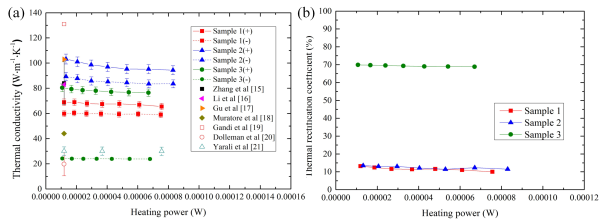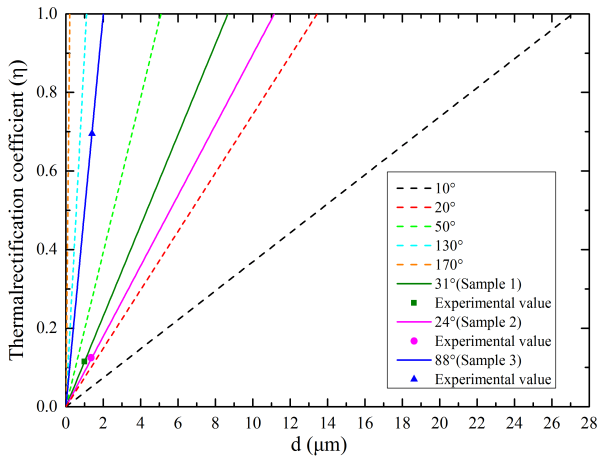Recently, the Institute of Engineering Thermophysics of the Chinese Academy of Sciences has made progress in the research on thermal rectification of single-layer molybdenum sulfide films. In recent years, two-dimensional materials have received attention, such as graphene, molybdenum disulfide, and black phosphorus. Molybdenum disulfide film has wide application prospects in the fields of batteries and hydrogen storage due to its unique electrical and thermal properties. The single layer molybdenum sulfide structure grown by chemical vapor deposition is similar to the diode used for electrical rectification, so it has potential advantages in thermal rectification applications. Thermal rectification is a special behavior in a heat transfer system, which is defined as under the same conditions, the heat flow in one direction is greater than the heat flow in the opposite direction. The thermal rectification effect has received attention because of its potential application in directional heat flow transmission.
The Energy Storage R&D Center of Institute of Engineering Thermophysics, Chinese Academy of Sciences has studied the thermal conductivity measurement and rectification effect of molybdenum disulfide film. The researchers used mask lithography to prepare a suspended microelectrode that can be used to measure the thermal conductivity of low-dimensional materials, as shown in Figure 1. Combined with the principle of harmonic detection, the single-layer molybdenum sulfide film is measured in both positive and negative directions of thermal conductivity, and the thermal rectification coefficient is obtained, as shown in Figure 2. The results show that the thermal conductivity of the three single-layer molybdenum disulfide samples is close to the values ​​in the literature, and their thermal rectification coefficients are 10-13%, 11-14%, and 69-70%, respectively. The experiment confirmed that the thermal rectification effect has nothing to do with the heating power. The asymmetry of the micro/nano structure is an important reason for achieving thermal rectification. Combining simulation calculations reveals the structure-effect relationship between the thermal rectification effect of the molybdenum sulfide film and the asymmetry of the sample (shown in Figure 3), which provides an important basis for the design and application of the molybdenum disulfide film in the thermal rectification device and device in accordance with.
Related research work is supported by the National Key Research and Development Program, the National Natural Science Foundation of China, the Scientific Talent Program of the Chinese Academy of Sciences, the International Cooperation Program of the International Cooperation Bureau of the Chinese Academy of Sciences, and the Beijing Key Laboratory of the Distributed Cogeneration System. Related research results were published in ACS Applied Materials & Interfaces.

Figure 1. Molybdenum sulfide film transferred to the electrode with PMMA

Figure 2. Relationship between thermal conductivity and thermal rectification coefficient with voltage

Figure 3. Comparison of thermal rectification coefficients and theoretical models at different angles with experimental results
Aluminum Window And Door Profiles
Aluminum Window And Door Profiles,Aluminium Window Frame Profiles,Sliding Window Aluminum Profile,Extruded Aluminium Profile For Window
Guangdong Jihua Aluminium Co., LTD , https://www.gdaaluminiumprofile.com